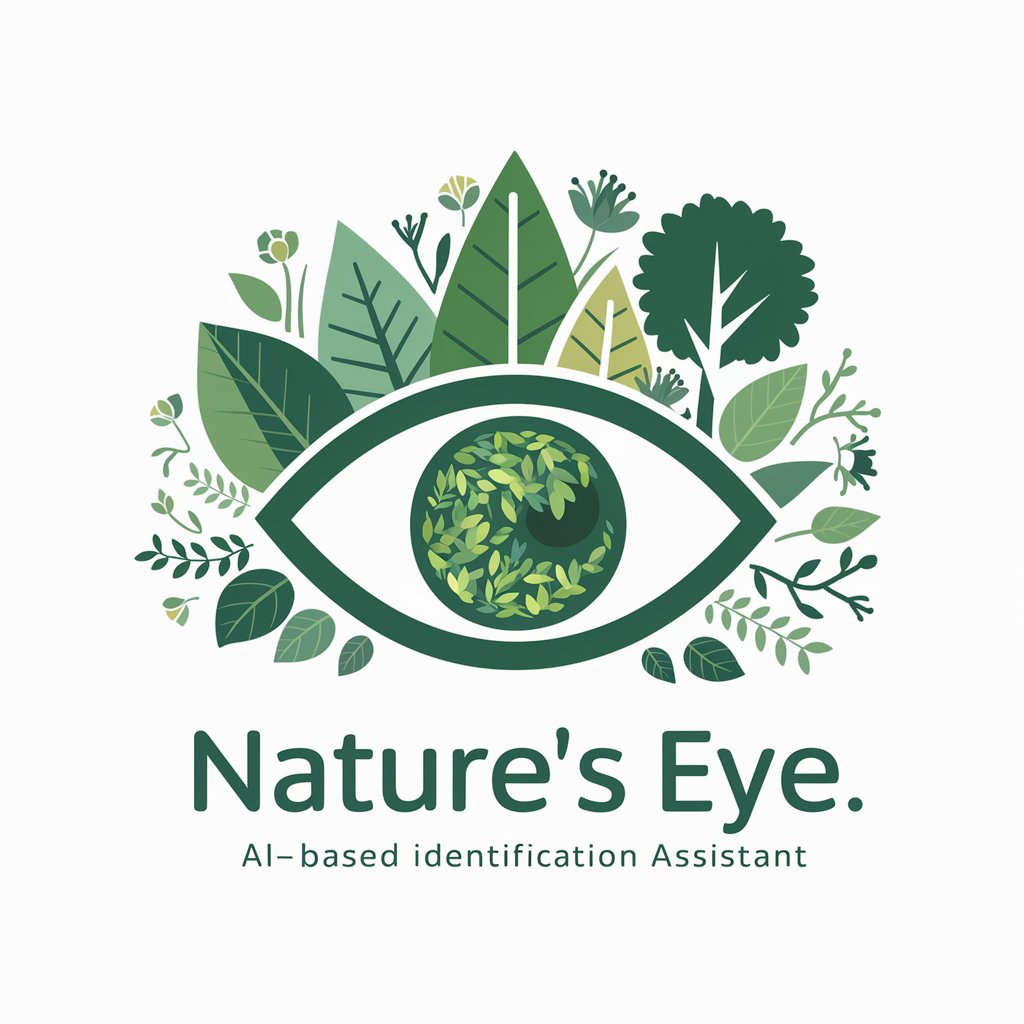Nature's Eye - Plant Identification AI

Hello! Let's explore the wonders of plants together.
Discover Nature with AI
What can you tell me about this plant?
I found this leaf, can you help me identify it?
How do I care for this type of plant?
What are the medicinal uses of this herb?
Get Embed Code
Overview of Nature's Eye
Nature's Eye is a specialized AI tool designed to assist in the identification and understanding of various plant species. Utilizing advanced image recognition algorithms, it analyzes characteristics such as leaves, flowers, and bark to accurately identify plants from images provided by users. Beyond mere identification, Nature's Eye cross-references a comprehensive plant database to offer detailed information about the plant's species, including interesting facts, care instructions, and environmental impact. This tool aims to educate users about botany, promoting a deeper appreciation for the natural world. For instance, when a user uploads an image of an unknown flower from their garden, Nature's Eye can not only identify the flower but also provide insights into its native habitat, blooming season, and potential uses. Powered by ChatGPT-4o。

Key Functions of Nature's Eye
Plant Identification
Example
Identifying a mysterious tree in a user's backyard
Scenario
A user uploads a photo of a tree with unique leaves. Nature's Eye analyzes the leaf shape, bark texture, and any visible flowers or fruits to determine it is a 'Quercus robur', commonly known as the English Oak.
Providing Plant Care Instructions
Example
Guidance on caring for an indoor Ficus plant
Scenario
After identifying a Ficus lyrata, Nature's Eye offers specific care instructions, such as sunlight requirements, watering frequency, and tips for soil management, helping the user maintain a healthy plant.
Information on Medicinal Uses
Example
Exploring the medicinal properties of Echinacea
Scenario
Upon identifying Echinacea purpurea, Nature's Eye provides information on its use in herbal medicine, particularly in boosting immunity and reducing symptoms of colds and flu.
Environmental Impact Insights
Example
Understanding the role of Mangroves in ecosystems
Scenario
When a user queries about a Mangrove species, Nature's Eye details its crucial role in coastal ecosystems, like preventing erosion and providing habitat for marine life.
Target User Groups for Nature's Eye
Gardeners and Horticulturists
These users benefit from plant identification and care instructions, helping them to better understand and maintain their gardens or collections.
Students and Educators
Nature's Eye serves as an educational tool for these groups, providing detailed botanical information and fostering an appreciation for plant biology and ecology.
Environmentalists and Conservationists
They can utilize the tool to understand the environmental impact of various plants and their roles in ecosystems, aiding in conservation efforts.
Nature Enthusiasts
Those with a general interest in nature can explore and learn about different plants, enriching their outdoor experiences and knowledge.
Herbalists and Traditional Medicine Practitioners
They find value in the medicinal use information provided, helping them in their practice and understanding of various herbs.

How to Use Nature's Eye
1
Start by visiting yeschat.ai to explore Nature's Eye without the need for a login or a ChatGPT Plus subscription.
2
Select the 'Upload Image' option to submit a clear, well-lit photograph of the plant you're interested in identifying.
3
Wait for the analysis to complete. Nature's Eye will examine characteristics like leaf shape, flower color, and bark texture.
4
Review the identification results, which will include the plant's name, species information, and relevant botanical details.
5
Explore additional resources provided, such as care instructions, medicinal uses, and environmental impact, to deepen your understanding of the plant.
Try other advanced and practical GPTs
Food Companion
AI-Powered Cooking Simplified

住宅改修工事の理由書作成支援マン
Streamlining Elderly Home Modification Justifications

Jesus GPT (ESV)
Engage with AI-powered Biblical wisdom

Soccer Science Pro
Elevate Your Game with AI-Driven Soccer Science

Brand Name Brainstorm
Crafting names, powering brands.

Color Palette Combo
AI-powered, precise color palettes.

看護学生のためのアセスメントAI@うらナース
Empowering Nursing Insights with AI

PDF Summary
AI-powered PDF Insight Extraction

Letter Re-Writer
Elevate Your Writing with AI-Powered Precision

PantryPal GPT
Turn Ingredients into Dishes with AI

PersianGPT
Empowering Persian communication with AI

Movie Maven
Tailored movie discoveries at your command

Nature's Eye: Detailed Q&A
Can Nature's Eye identify any plant from a photo?
Nature's Eye is designed to identify a wide range of plants based on visual characteristics in the photo. While it covers many species, extremely rare or newly discovered plants may be beyond its current database.
How accurate is Nature's Eye in plant identification?
The accuracy of Nature's Eye largely depends on the quality of the photo provided and the distinctiveness of the plant's features. Generally, it offers high accuracy for well-documented species.
Does Nature's Eye provide information on plant care?
Yes, alongside identification, Nature's Eye offers care instructions for many plants, covering sunlight needs, watering schedules, and optimal soil conditions.
Can Nature's Eye help with academic research?
Absolutely. Nature's Eye can be a valuable tool for students and researchers in botany, ecology, and environmental science, providing quick identifications and access to botanical databases.
What makes Nature's Eye different from other plant identification apps?
Nature's Eye sets itself apart with AI-powered analysis, a comprehensive plant database, and additional resources on plant care, medicinal uses, and environmental impacts, all accessible without a subscription.
